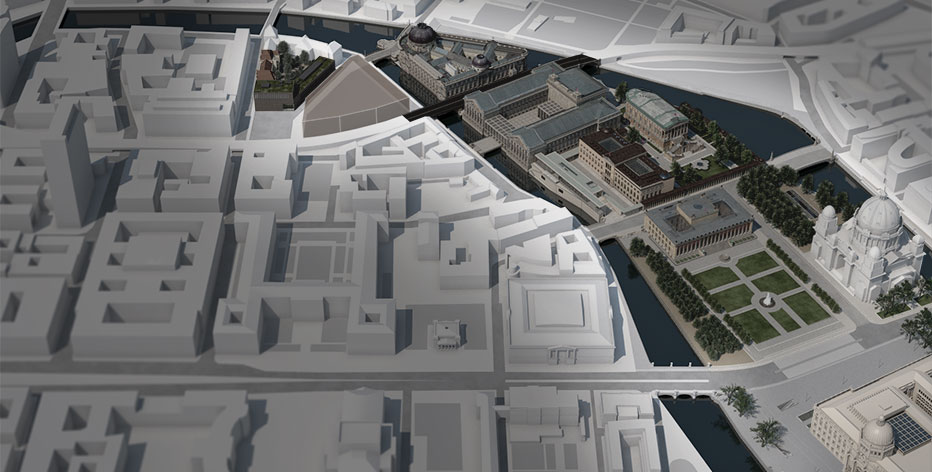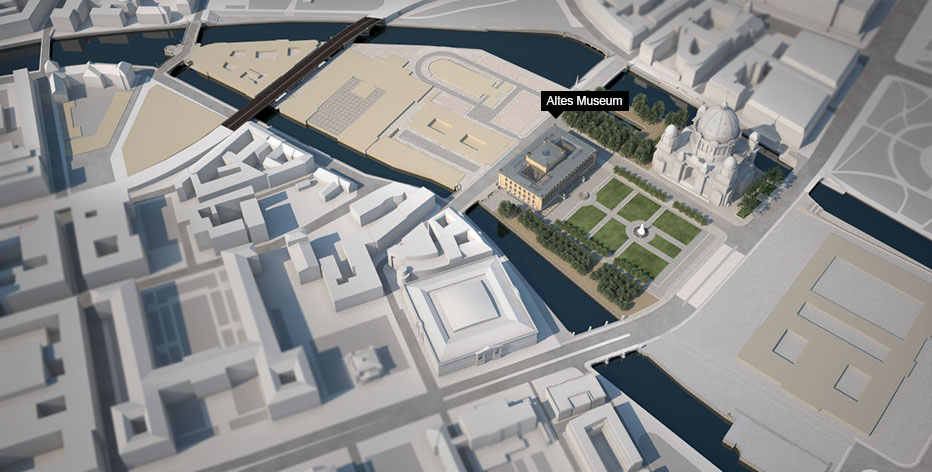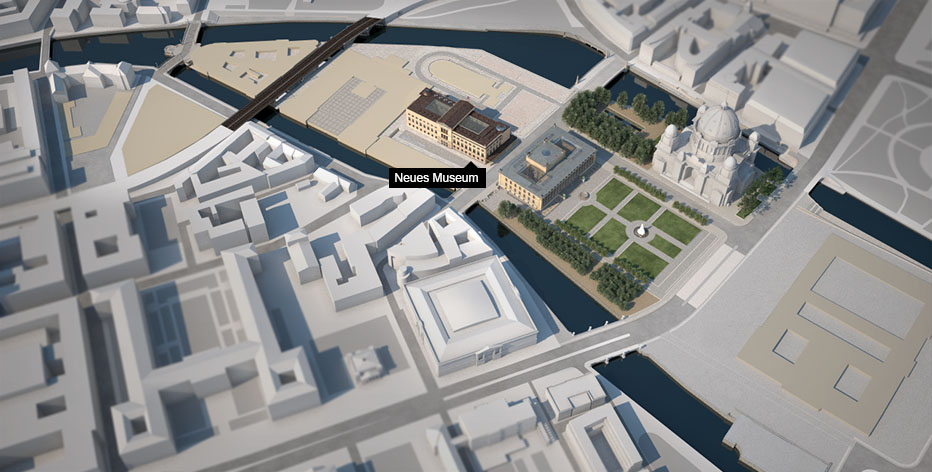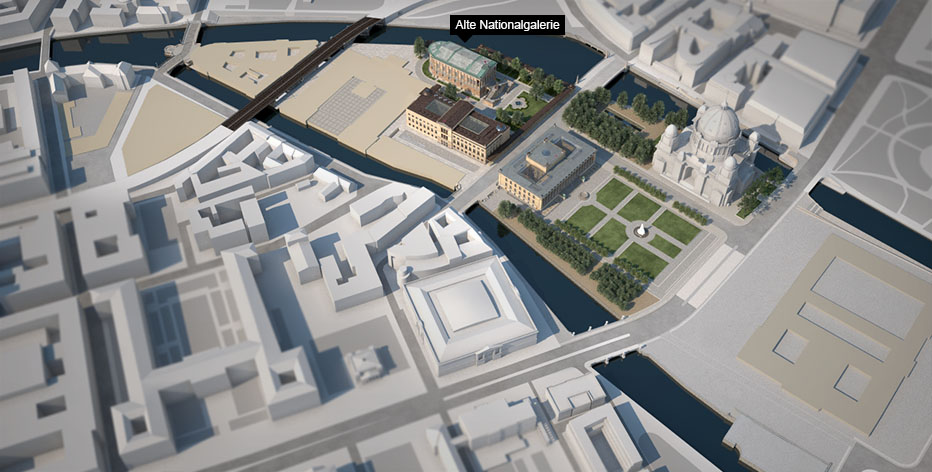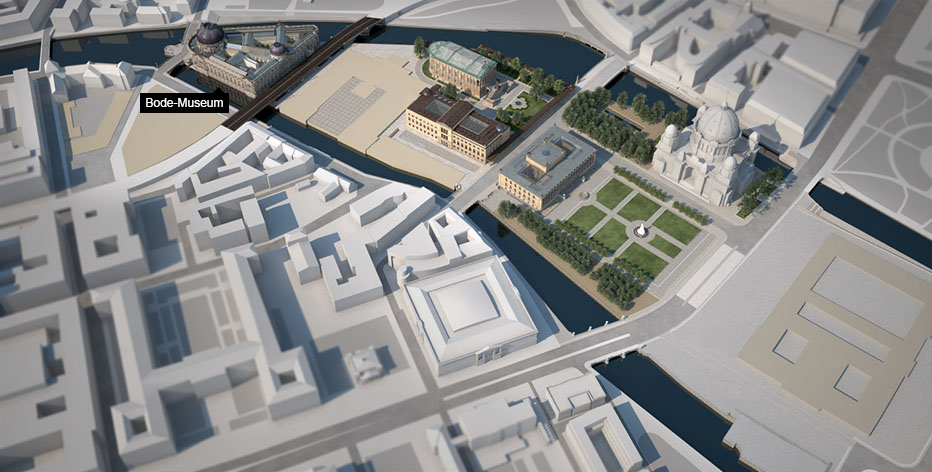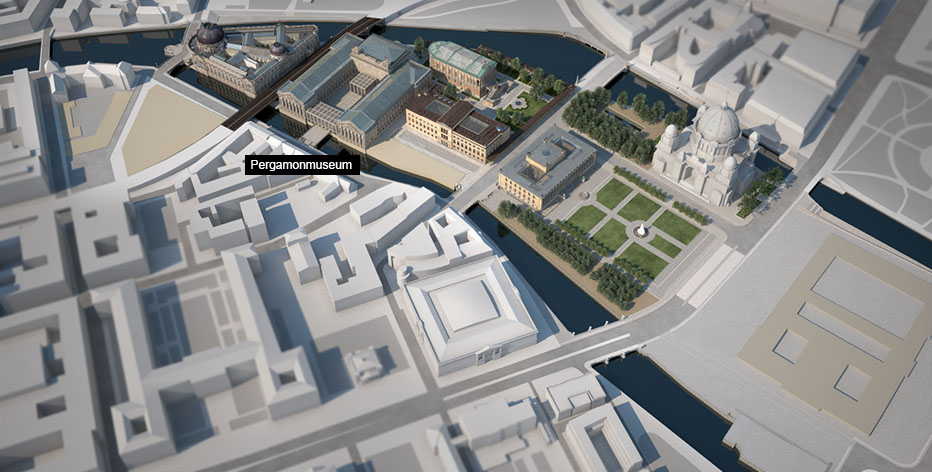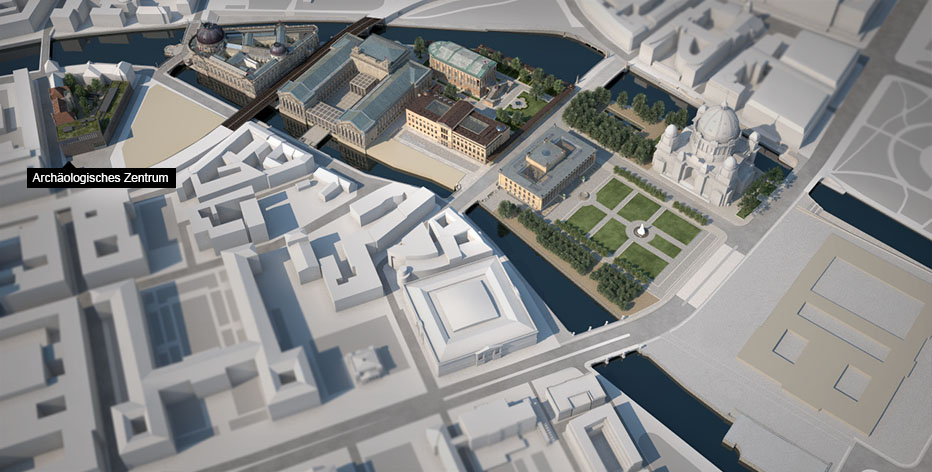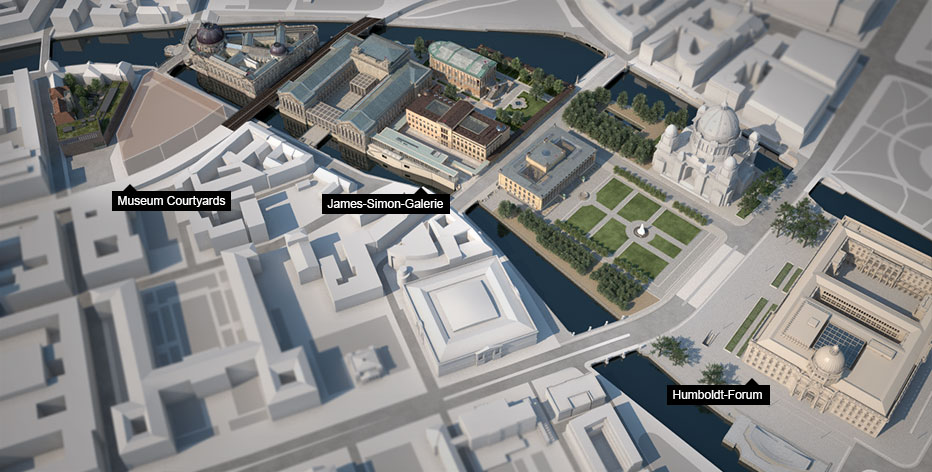A Unique Ensemble in the Center of Berlin
Between 1823 and 1930, a unique ensemble of museums emerged on the Spree Island. The UNESCO, in its reasoning for including the Museum Island Berlin in the World Heritage List, describes it as the most outstanding example of the concept of the art museum that owes its origins to the Age of Enlightenment. The Museum Island was designed by some of the most eminent architects of their time – Karl Friedrich Schinkel, Friedrich August Stüler, Ernst Eberhard von Ihne and Alfred Messel. Each of the five museums is an individual building that blends in harmoniously with the overall picture of the island. In the context of the Museum Island Master Plan, further buildings will be carefully added to the historical ensemble. Just as in former times, world-famous architects such as David Chipperfield are in charge of this today. The realization of the building projects in the context of the Museum Island Master Plan rests with the Federal Office for Building and Regional Planning.
